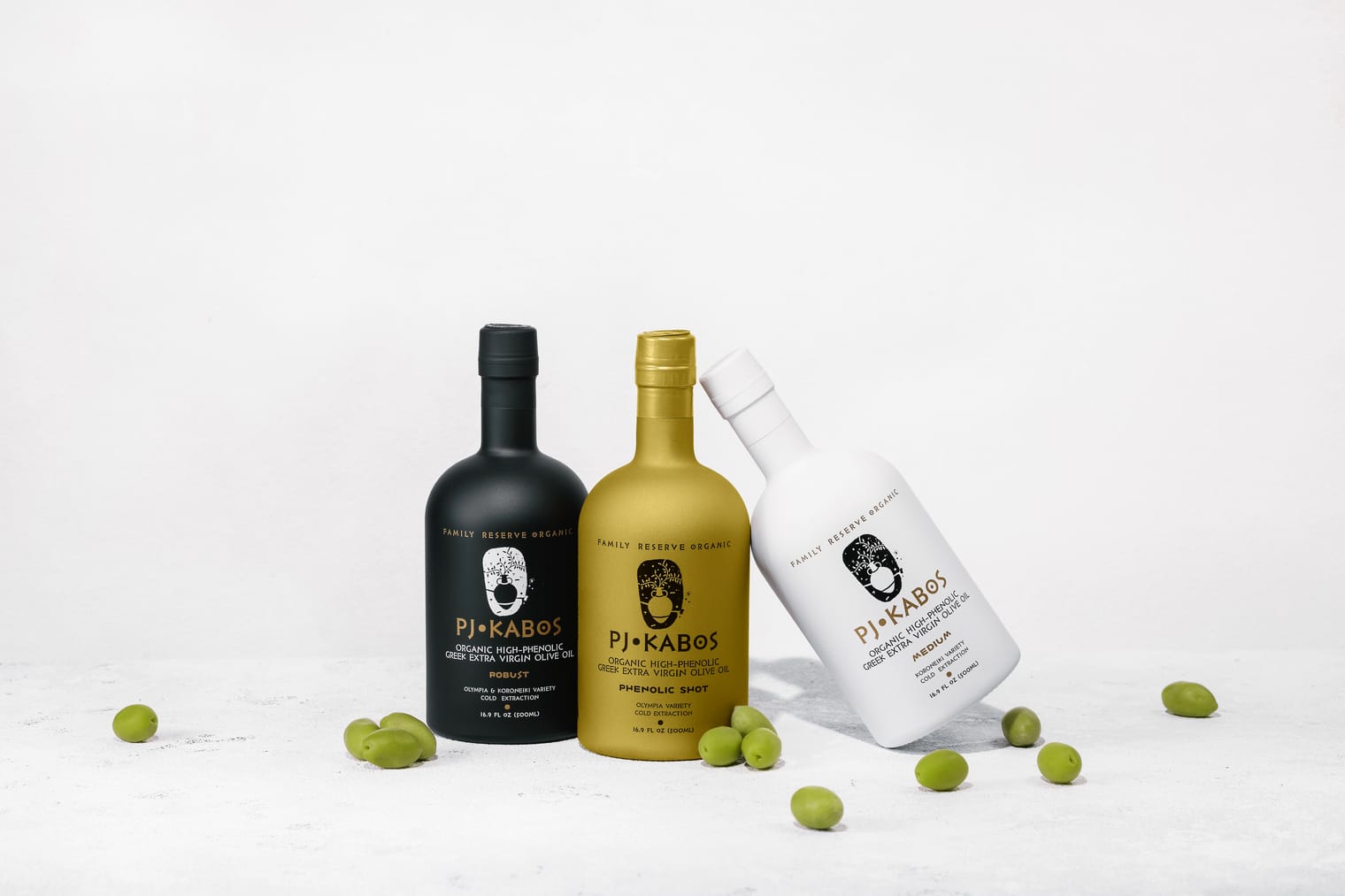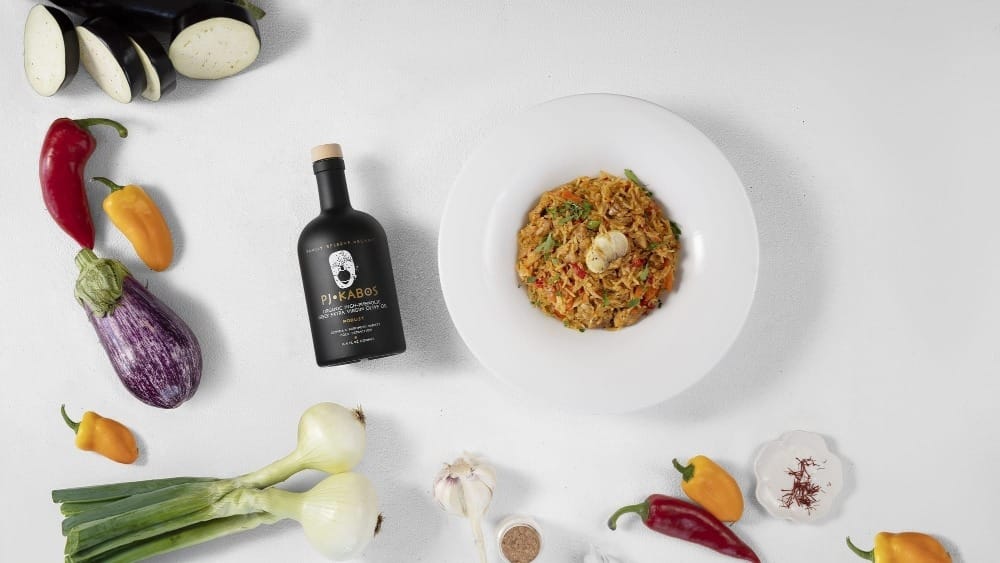Part 1: The Development of the Ancient Greek Cheese Pie – Tiropita Koulouriou
Bread
To begin today's recipe's evolutionary journey we must first take a step back and briefly reflect on bread in general.
Breads made from various grains form a staple part of diets worldwide, each with unique characteristics. Whether the bread is made from wheat, rice, barley, spelt, corn, rye, oats, millet, sorghum, etc., these grains provide diverse textures and flavors that reflect regional culinary traditions and often religion practices too.
Ancient Egypt is one of the earliest civilizations to have testimony about bread-making and the use of bread.
Ancient Greeks on Ancient Egyptian Bread making
The Ancient Greeks provide some of the earliest written information about bread in Egypt. Herodotus, in Histories (Book II), gives snippets of information concerning various aspects of Egyptian culture, including their dietary practices and methods of bread-making. His writings compliment the Egyptian artwork that often depicts wheat cultivation, production, bread-making and religious uses.
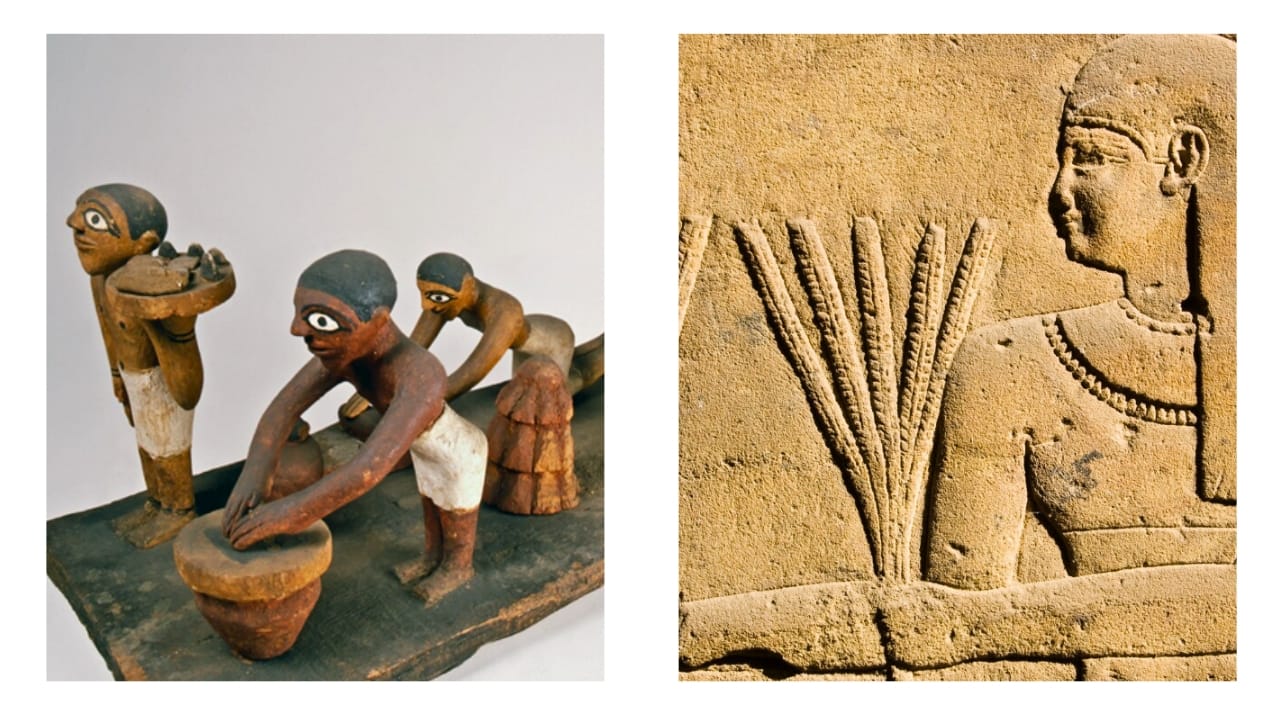
Centuries later, the Romans, recognizing Egypt's crucial role in grain production, referred to Egypt as the 'breadbasket' or 'granary' of the Roman Empire. This underscored its vital contribution to feeding not just Egypt, but Rome and its vast territories, and especially, during the later empire, keeping the tummies of the people in the capital city of Rome satisfied.
Whether the Ancient Egyptians were the first to eat bread is unknown, but it is unlikely, as great civilizations around the world–Indus Valley, China, etc.– were emerging at about the same time, with the Sumerians even predating Egypt. The development of bread likely occurred independently in multiple regions as communities began cultivating grains and experimenting with cooking methods. However, bread-making is well-documented in Egypt by the Greeks, and its proximity to Greece, and through Greece to the rest of Europe, significantly influenced bread-making in that particular region of the world.
How Tiropita Koulouriou (accent on the "i") Developed Through Time
Leavening
Sourdough
But let’s return to Ancient Greece to trace the development of today’s recipe—a “semi-spicy, olive oil, cheese, yogurt bun or pie.” As you will see, this bread is super easy to make, thanks to the convenience of self-rising flour.
But leavening, a process we often take for granted, revolutionized the art of bread making. While it’s possible that the Greeks learned about leavening from the Egyptians, it’s also conceivable that both civilizations—and perhaps others—independently discovered the magic of natural fermentation, known as sourdough, “the primordial form of bread leavening.” [1]
Eons later, "in the United States, sourdough bread was vital to the pioneers traveling west in slow-moving wagon parties, with no means of preserving yeast for baking. Sourdough starters are relatively easy to maintain, and if all else failed, another starter could be prepared from flour and water. It was so important a part of the survival kit of the adventurers seeking gold in Alaska and the Yukon in 1898 that they became known as ‘sourdoughs.'" [2]
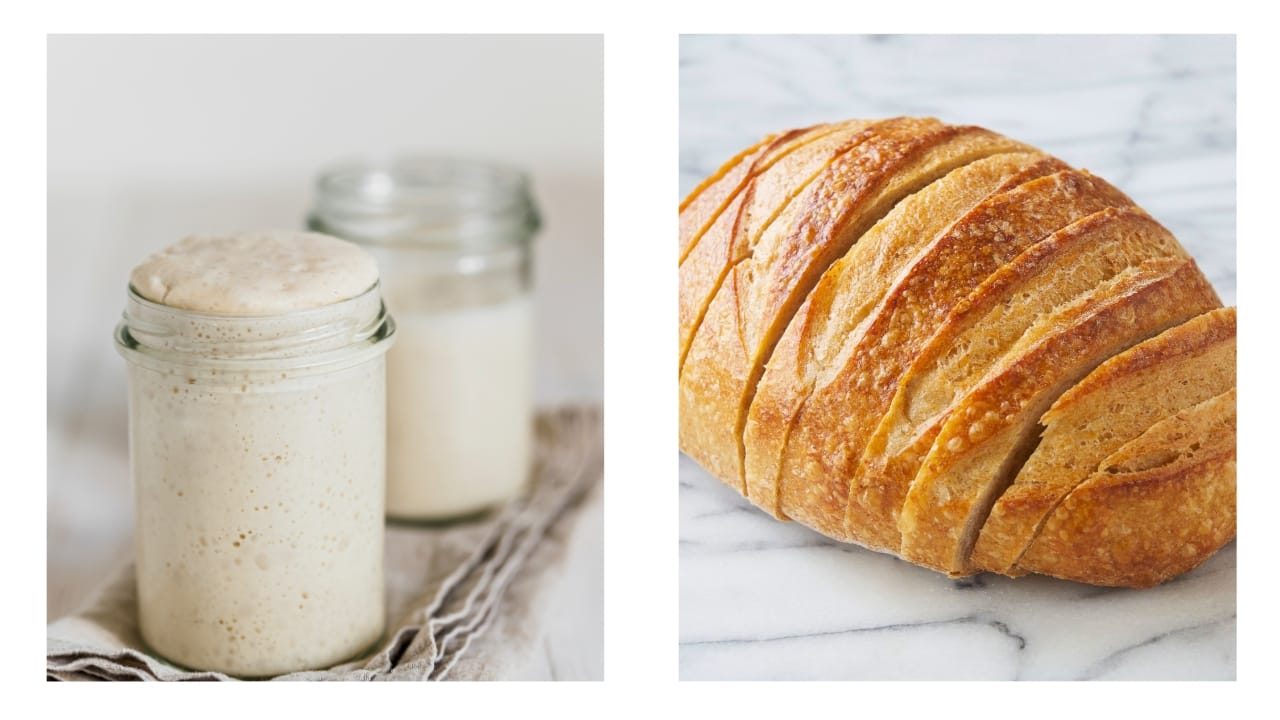
To make sourdough, the ancients would mix flour and water, place it in a temperature-controlled area, and allow the mixture to capture wild yeasts and bacteria from the environment. Over time, it would ferment, developing distinct flavors and leavening properties. This fermented dough, or starter, would then be incorporated into fresh batches, acting as a natural leavening agent and giving rise—no pun intended!—to bread as we know it today. Naturally, this is something we can still do in our own kitchens, which remains a beautiful link to humankind's ancient past.
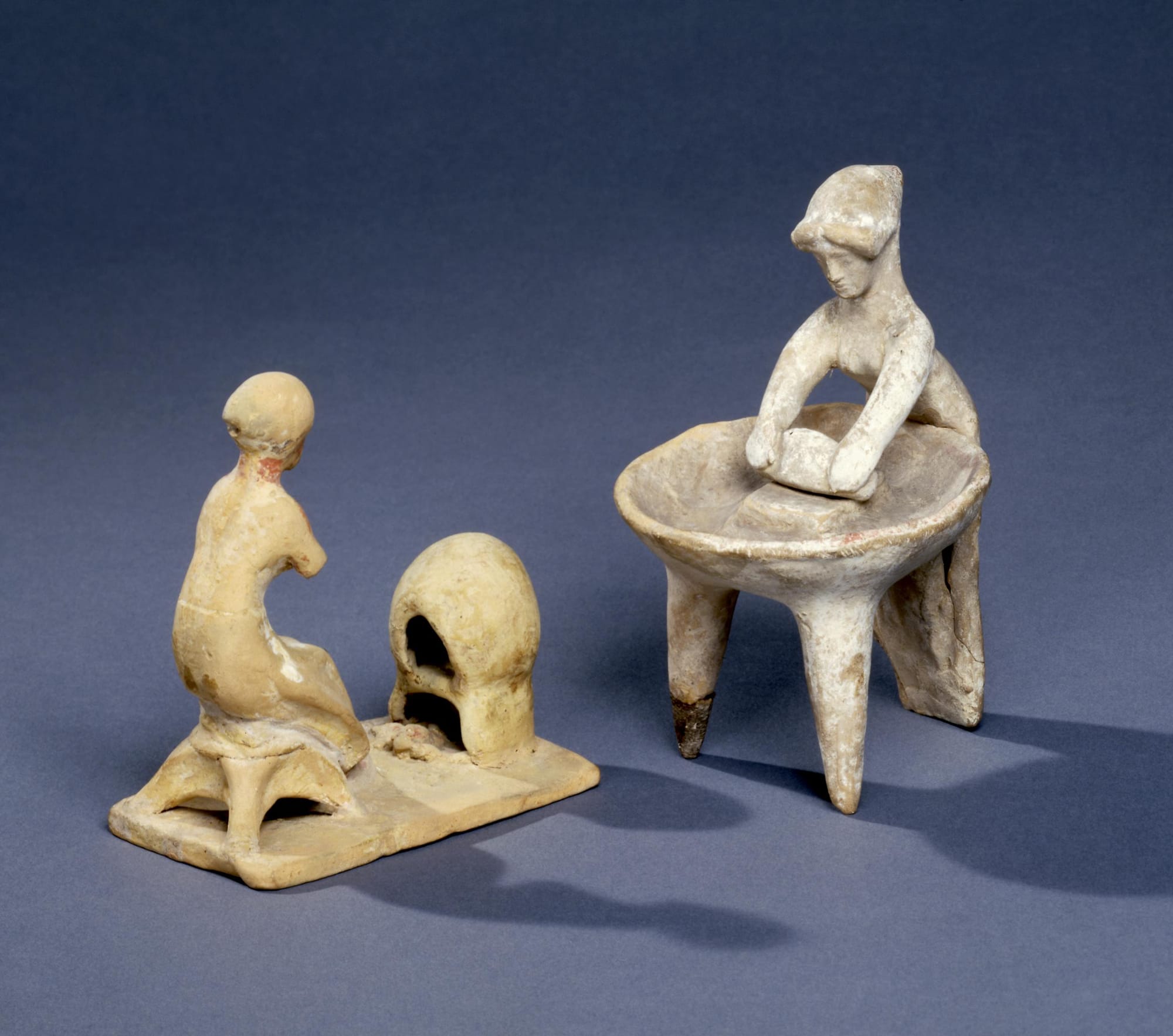
Unleavened vs. Leavened Breads
The undeniable truth is that the ancient Greeks had a rich tradition of bread-making that naturally evolved over time, encompassing both unleavened and leavened varieties.
Azymos—Unleavened Bread
At the heart of their culinary heritage were simple flatbreads known as plakous, made from just flour and water. These were eventually called azymos, translating to "unleavened" in Greek, derived from the prefix a- meaning "without" and zyme, meaning "leaven" or "yeast." These unleavened breads were quick to prepare, making them a staple in everyday meals. They occasionally featured layers of ingredients, somewhat reminiscent of modern-day phyllo pastries, with either savory or sweet ingredients placed between each layer.
Artos—Leavened Bread
With the advent of leavening, a whole new almost magical realm opened up for the ancient people who loved bread. The dough that once lay flat, now transformed into a light and airy marvel, where the enchantment of rising dough captivated hearts and palates alike. And this new bread was known as artos.
Aided by the development of dome-shaped, wood-burning ovens—renowned for their superior heat distribution and retention—the ancient Greeks began experimenting with leavened bread. These ovens—still in use in Greece and in other areas of the world today—played a crucial role in this culinary evolution. In ancient Greek, artos generally means "bread," but in historical and culinary contexts, it specifically connotes "leavened bread." The use of the term artos reflects the sophistication of Greek baking techniques as they began to incorporate leavening agents, typically utilizing a sourdough starter. This innovation marked a significant advancement.
Literary sources from ancient authors—such as Athenaeus of Naucratis (circa 170 and 230 AD)—provides insight into these practices, mentioning various types of bread and baking techniques that included leavening.
Athenaeus of Naucratis, in his work "Deipnosophistae" (translated as "The Banquet of the Learned"), provides a wealth of information about ancient Greek culinary practices, including discussions on various types of bread and baking techniques. The "Deipnosophistae" is a multi-volume work that consists of dialogues among learned men discussing a wide range of topics over a banquet.
Archaeological discoveries of ancient baking facilities and tools further support the existence of sophisticated bread-making processes. Bread held significant cultural value, often appearing in rituals and offerings, demonstrating the widespread use and importance of both unleavened and leavened breads in Greek society from ancient days, Hellenic times, through to the evolution of the Roman Byzantine era, the Ottoman occupation and on up to today with the vast majority of Greeks worldwide still including bread with every meal.
Olive Oil
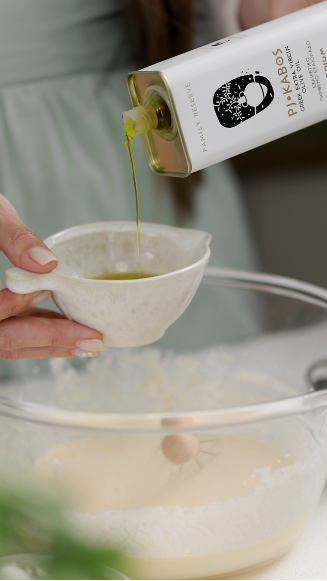
Olive Oil in Ancient Bread
Now we move on to the use of olive oil in today's recipe.
Olive oil was undoubtedly a cherished staple in ancient Greek bread-making. This much-treasured ingredient, celebrated for its flavor, practicality, and many health benefits would have been used at various stages of the baking process.
In preparing bread dough, ancient Greeks, who used olive oil for nearly everything from cooking, skincare, bathing, medicinal purposes and religious ceremonies, naturally enriched it with this versatile ingredient (See The Enigmatic Olive Tree: What Was Its Impact on Ancient Greece? (Part 1) & Part 2). This addition wasn't just about enhancing flavor; it also rendered the dough softer and more pliable, resulting in a tender, rich crumb—a hallmark of Greek baking expertise.
Similarly, olive oil had practical cooking uses akin to its modern-day applications; greasing the pans to ensure the dough did not stick to pans or ovens. This was especially helpful when baking flatbreads directly on the oven floor or a baking stone, as it guaranteed effortless removal and perfect bread every time.
Beyond its role in preparation, olive oil played a pivotal role in finishing the bread. Brushing the dough with olive oil before baking imparted a beautiful color to the crust and added a subtle depth of flavor. Even after baking, a drizzle of olive oil could elevate a simple loaf, often combined with herbs or vegetables or maybe an egg to enhance the dining experience.
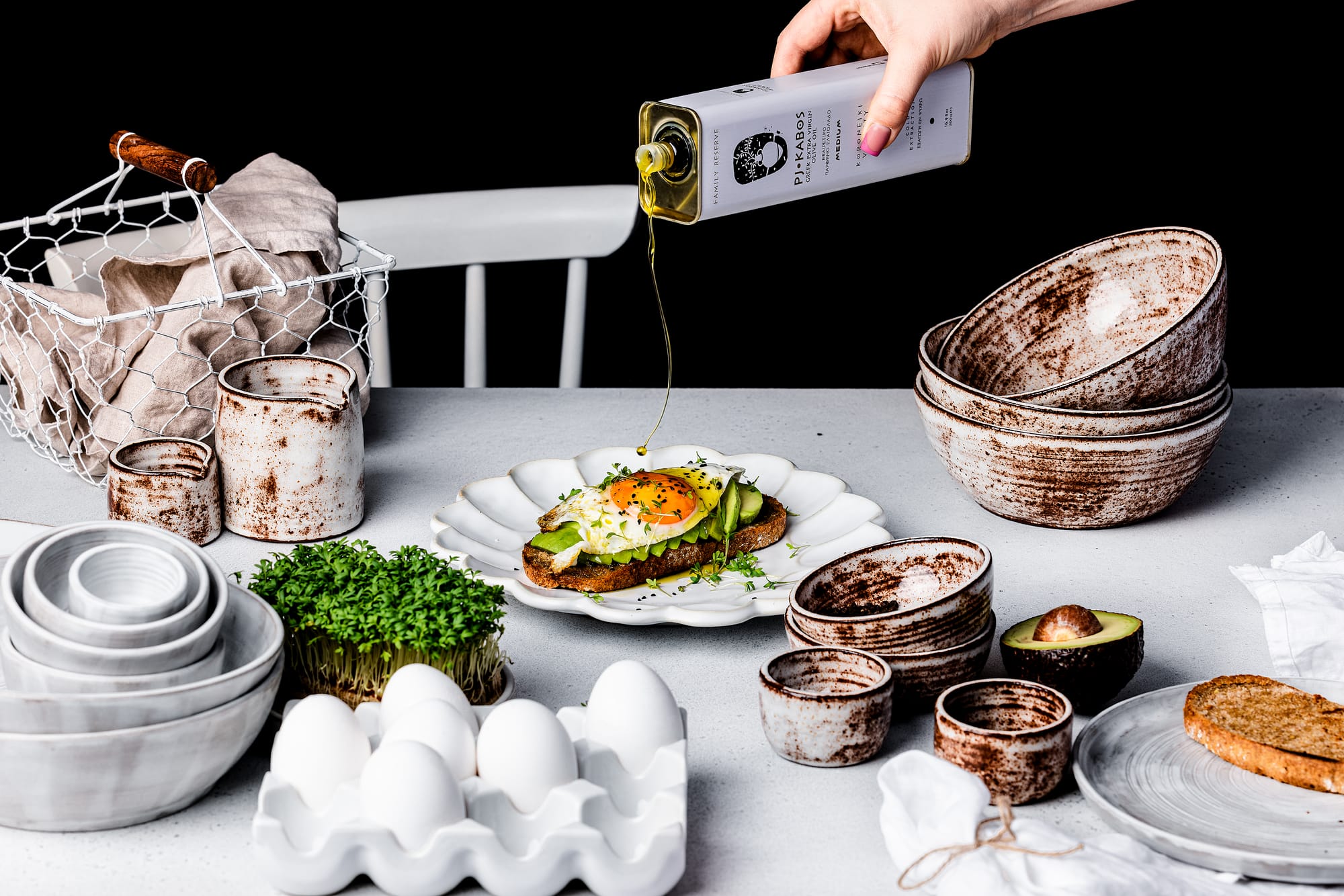
The prominence of olive oil in bread-making is well-documented in ancient texts and supported by archaeological findings. Classical Greek authors such as Homer, Hesiod, Theophrastus, and Aristotle—tutor to the great king, Alexander the Great—reference its use, underscoring its importance. Archaeological discoveries, including thousands of amphorae, further attest to its widespread application in ancient kitchens.
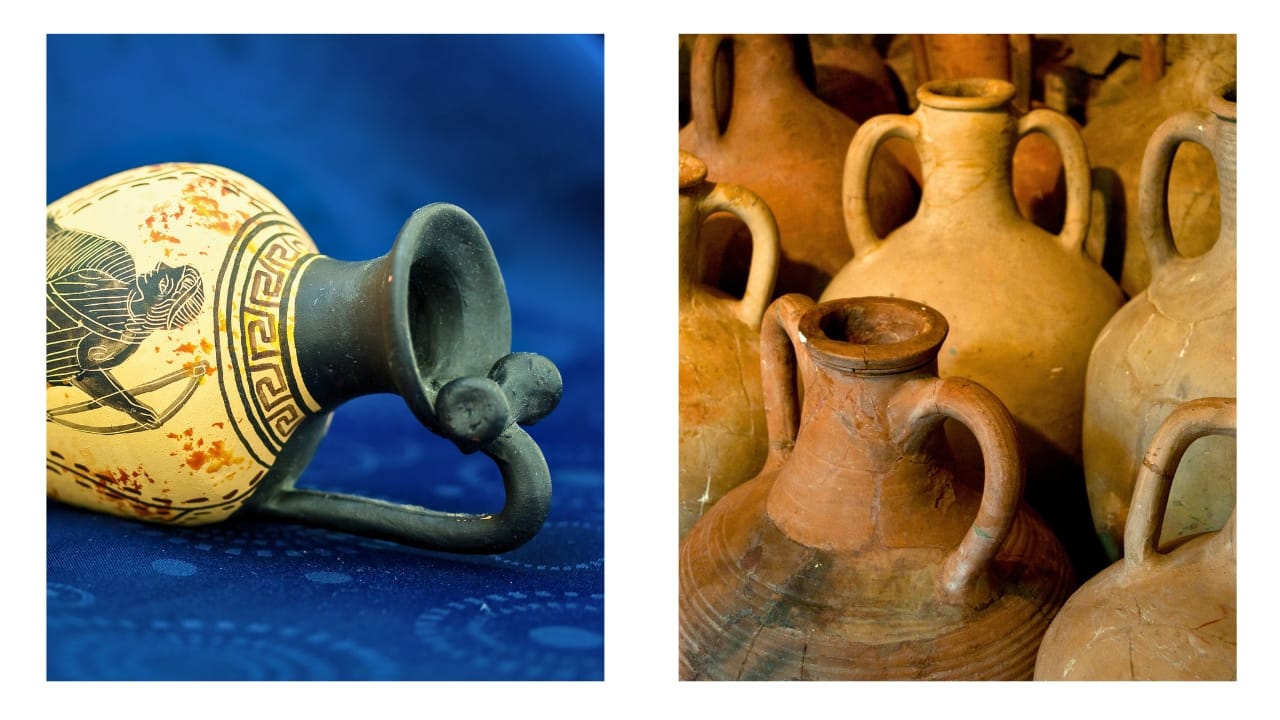
Today, olive oil continues to be valued in bread-making for the same reasons that the ancients used it. From enriching dough to greasing pans and enhancing the final product’s taste and appearance, to being a very healthy fat which the body requires, olive oil maintains its status as a cherished ingredient that connects modern bakers with those of the past.
Cheese & Bread
In addition to leavening and olive oil, the ancient Greeks had a fondness for enriching their bread with cheese, something showcased in today's recipe.
Ancient Unleavened Cheese Bread
One notable, ancient example of unleavened bread is the aforementioned plakous, which could be prepared as savory with cheese or sweet with ingredients such as honey, nuts, and seeds, added between layers. Modern Greek savory pies, such as tiropita (cheese pies made with phyllo dough) and spanakopita (spinach pie), as well as layered pastries like baklava, can trace their culinary roots back to these ancient practices. However, baklava in its present form also reflects the diverse cultural influences of the Ottoman Empire, which was a melting pot of various peoples and traditions.
Ancient Leavened Cheese Bread
Leavened dough infused with cheese was nothing short of transformative, unlocking a realm of culinary enchantment that elevated simple bread to new heights. It transcended mere dough, weaving together cheesy flavors, nutrition, and airy texture in a captivating evolution of culinary science. It could be considered ancient man's convenience food, as it didn't spoil or spill easily and was perfect to take along on a journey.
Contemporary Cheese Bread
Contemporary versions of leavened cheese bread such as Tiropsomo (cheese loaf) and our recipe today, Tiropita Koulouriou (Cheese pie Koulouri-style), uphold the age-old tradition of blending cheese into the dough.
Tiropsomo and Tiropita Koulouriou
Even though they seem similar Tiropsomo and Tiropita Koulouriou represent two distinct breads with unique textures and flavors.
Tiropsomo, traditionally a loaf, is characterized by its dense and hearty consistency. It combines simple ingredients like flour, yeast, water, olive oil, and crumbled feta cheese. This bread is prized for its robustness, making it perfect for slicing and serving alongside meals or enjoying as a satisfying snack.
In contrast, Tiropita Koulouriou, our featured recipe today, offers a softer and more tender experience. Enhanced by the addition of yogurt to the dough, it achieves a fluffy texture that practically melts in your mouth. Shaped into round buns or rings reminiscent of the classic Greek Koulouri, these buns are adorned with sesame seeds, poppy seeds, or left plain. They deliver a savory profile enriched by feta cheese and another cheese of choice, along with delicate spices, creating layers of complex flavors.
These two breads exemplify the enduring tradition of Greek baking, each offering a unique taste and texture that celebrate the several millennial bread-making heritage of Greece.
A Word about Koulouri
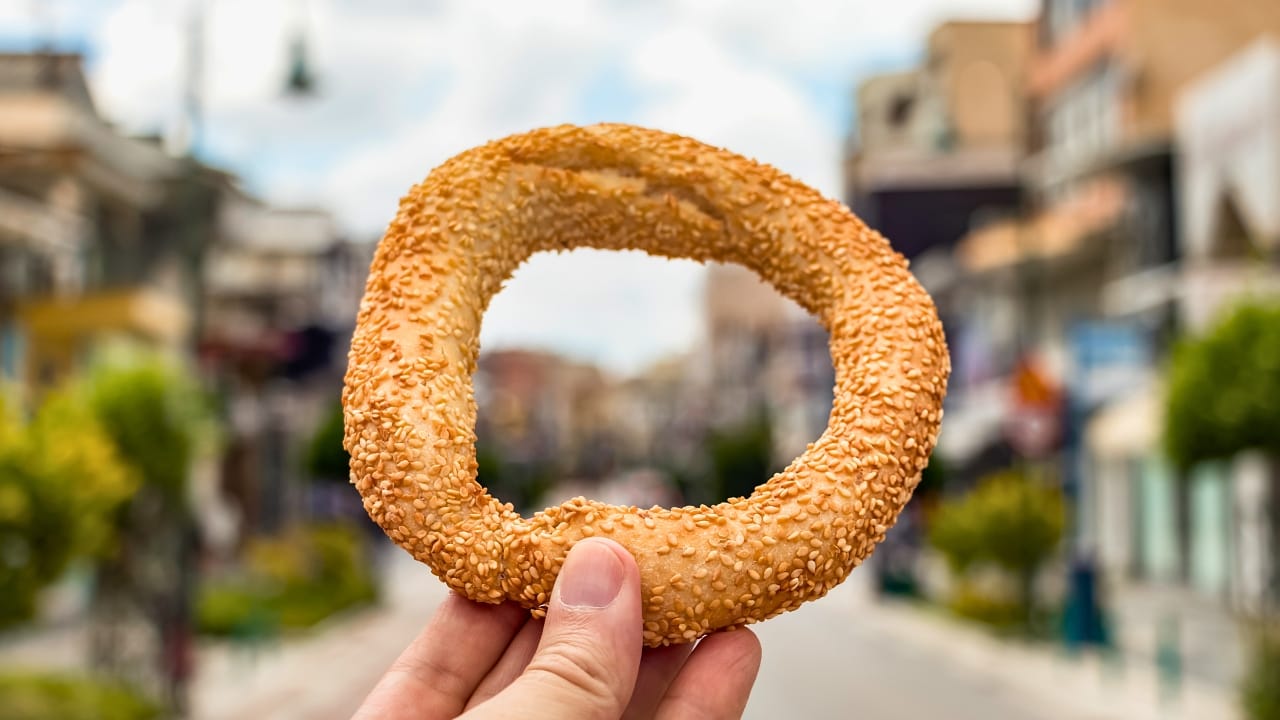
In the evolution to today's recipe, Tiropita Koulouriou, we must make mention of the Koulouri which lends its ancient name to our recipe.
The word "koulouri" carries a rich history, tracing its origins back to ancient times and reflecting the cultural exchanges of the Mediterranean. Derived from the Ancient Greek word "κολλούρα" (kolloura), which referred to a round, twisted bread or cake, the term is believed to stem from "κόλλα" (kolla), meaning "glue" or "anything round and twisted"—a nod to the bread's distinctive shape.
As we move into the Byzantine era, "kollourion" emerged as the term for a type of bread roll. The Byzantines, renowned for their bread-making prowess, popularized "kollourion" as a staple sold by street vendors in the bustling markets of Constantinople. This bread, twisted into rings, became a beloved snack, cherished for its convenience and delightful texture.
The journey of the word didn't stop there. Through the melting pot of the Ottoman period and into modern times, the name "kollourion" finally evolved into "koulouri" in Modern Greek.
Today, koulouri remains a popular treat, its name echoing centuries of history. From ancient Greek markets to modern street corners, koulouri's etymology tells a story of the timeless appeal of a simple, yet iconic, bread.
And it is a nod to this that the second part of our recipe's name Koulouriou pays homage signifying that it is leavened bread, round and often covered with sesame seeds like a koulouri and an easy food to eat on the go.
Part 2: Visual Recipe: Tiropita Koulouriou
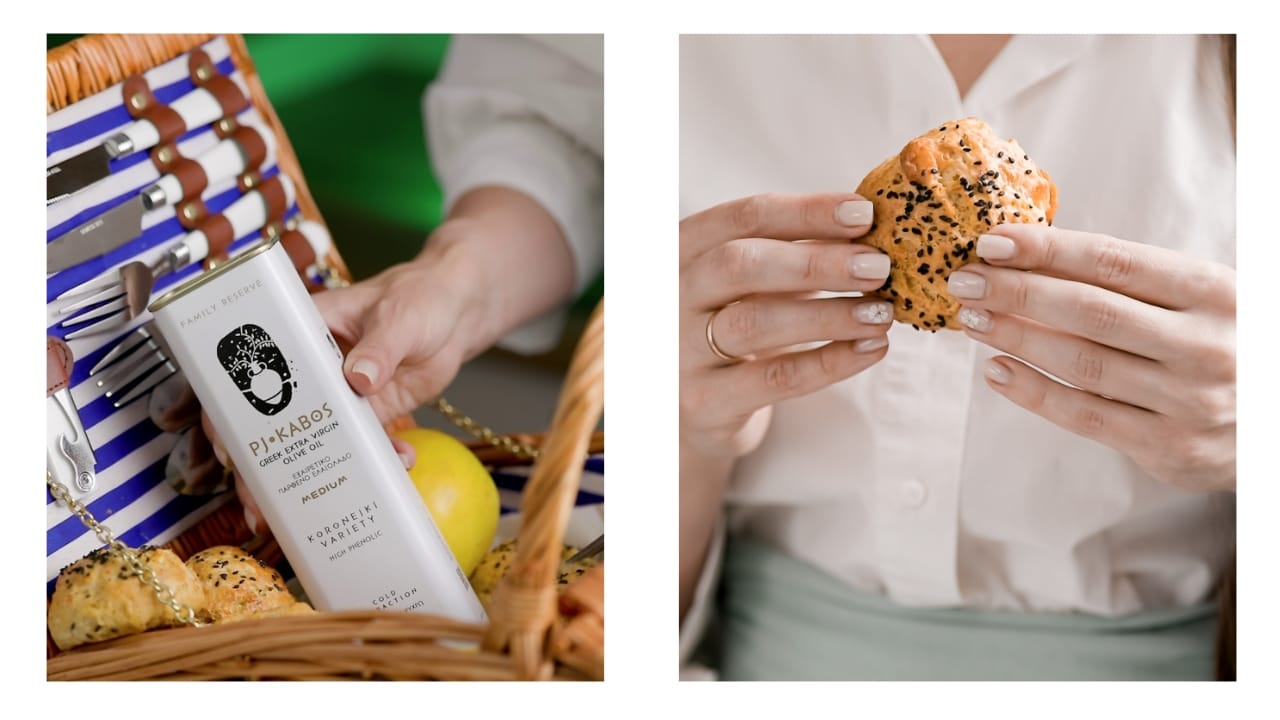
PJ KABOS Extra Virgin Olive Oil to use: Family Reserve Medium or Family Reserve Organic Medium
Makes: twenty or so, depending on the size
Ingredients
- 1 cup yogurt
- 3 eggs
- 1 cup PJ Kabos Extra Virgin Olive Oil
- 500 grams (or 3½ cups) self-rising flour
- ½ tablespoon salt, or to taste
- ½ teaspoon pepper, or to taste
- ½ teaspoon paprika, or to taste
- ½ teaspoon oregano, or to taste
- 1 cup Kasseri cheese (or Parmesan or Gouda or whichever is your favorite), grated (not fine)
- 1 cup feta cheese, crumbled (large pieces)
Preparation
Preheat fan-assisted oven to 180°C (350°F).
1) In a large bowl, add the eggs, and the yogurt.
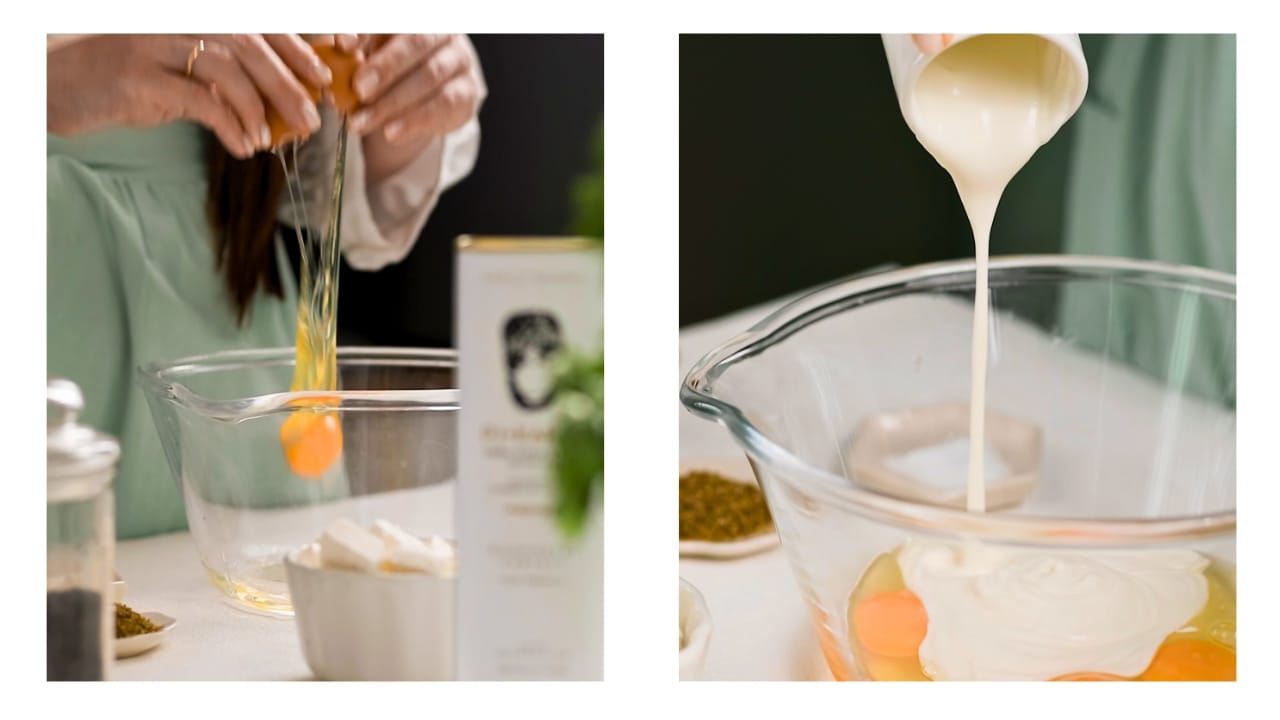
2) Mix in PJ Kabos Extra Virgin Olive Oil...
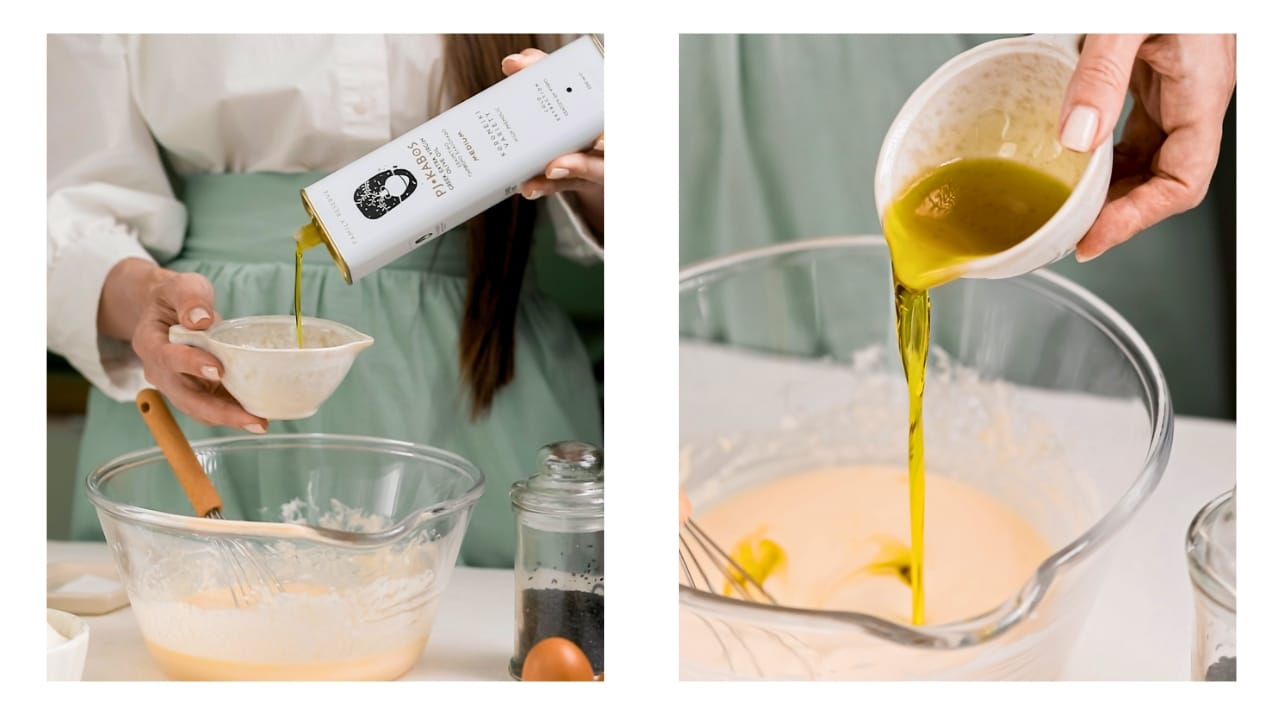
3) Add the oregano, paprika, salt and pepper to the bowl.
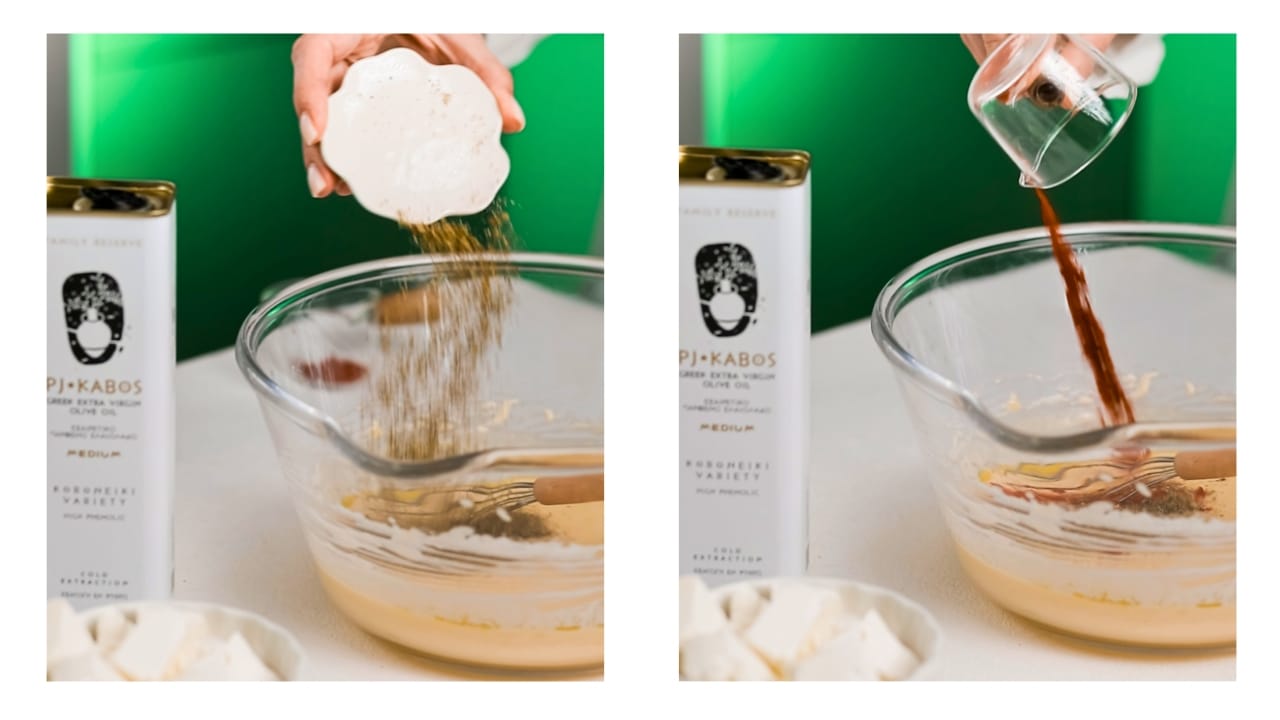
4) Stir well, then sift in the flour.
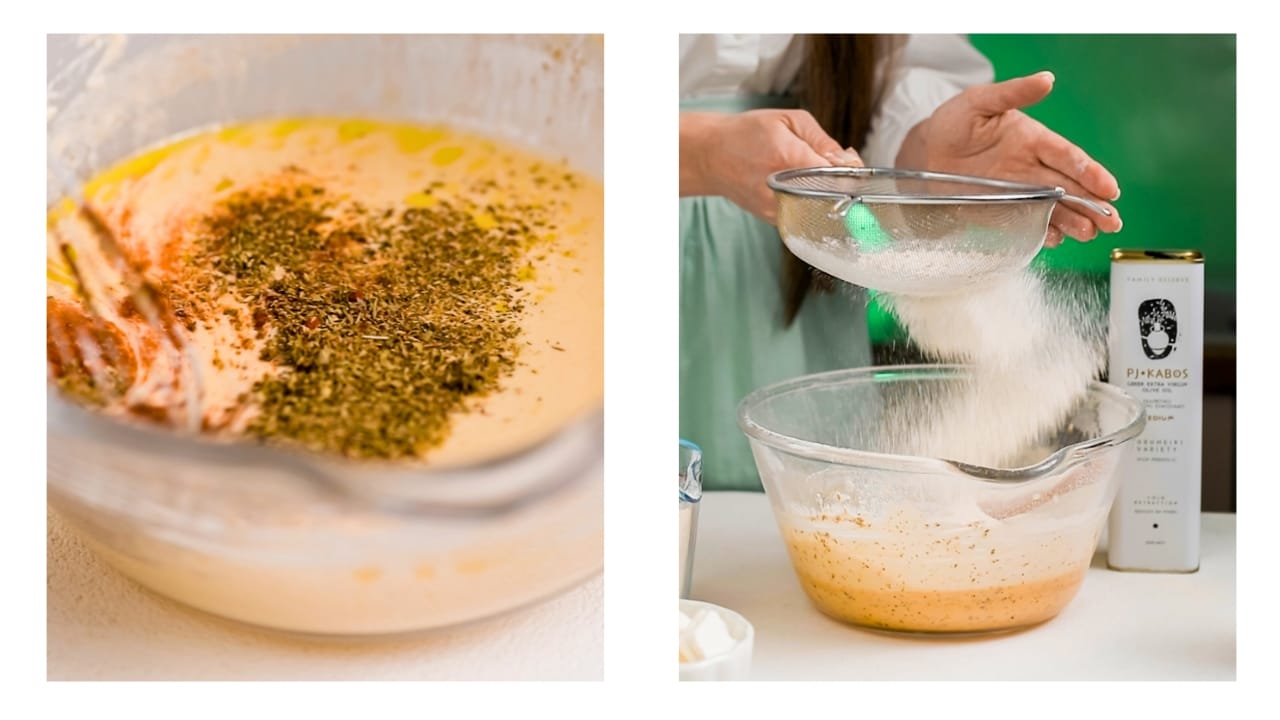
5) Fold in the feta chunks and other grated or sliced up cheese.
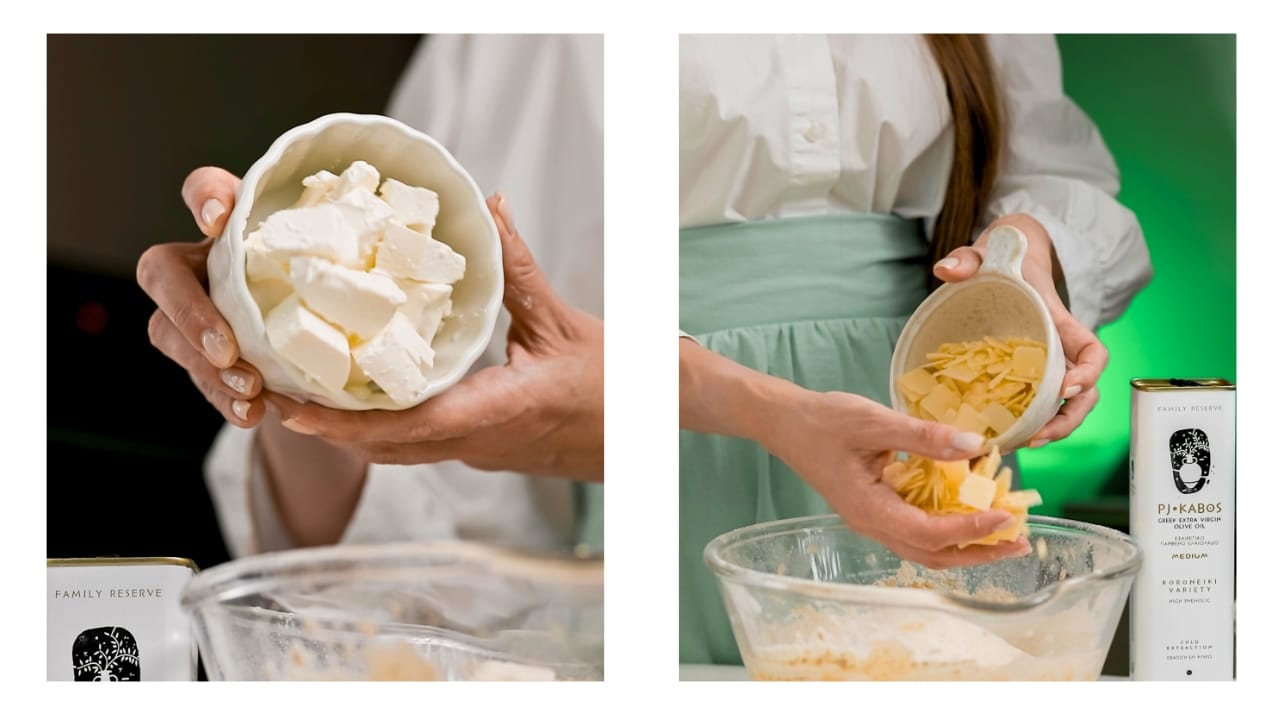
6) Mix well with a large spoon, then using your hands form into buns.
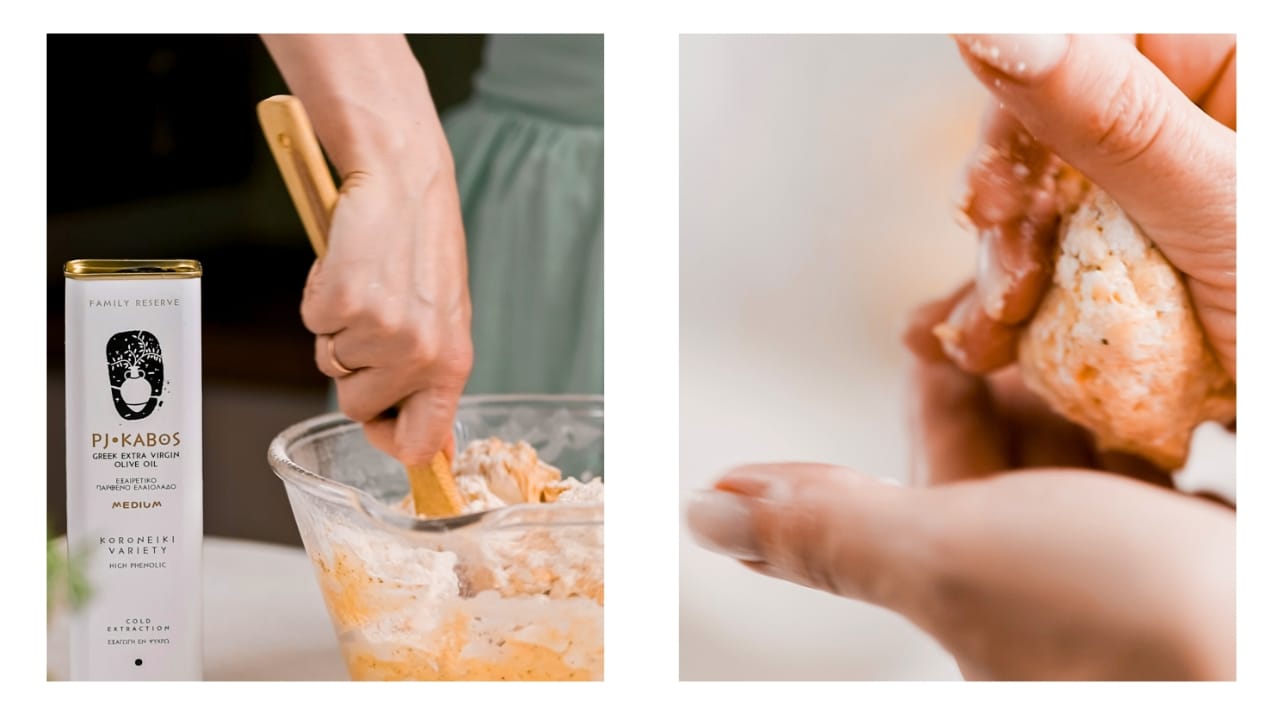
7) Line a baking sheet with bake paper. Place the buns on the cookie sheets as you finish them. Leave about 1½ inches (3.5 cm) spreading room between each biscuit. Brush the tops of the biscuits with milk.
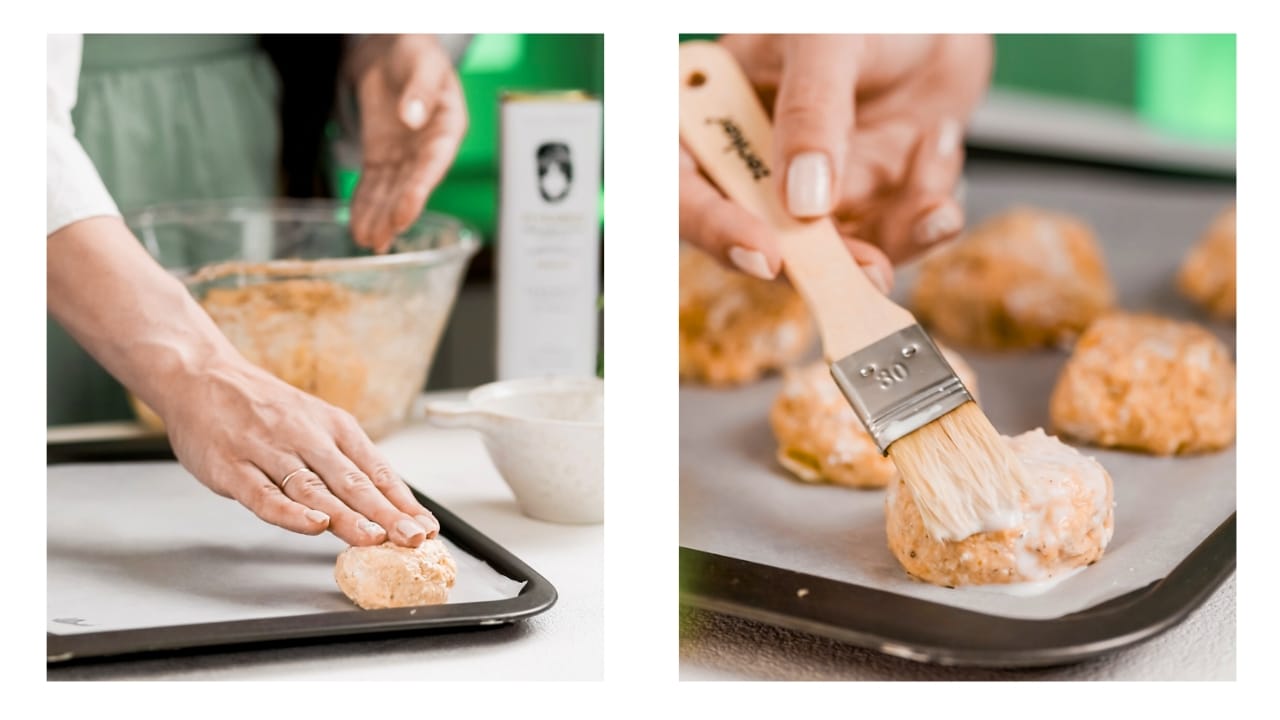
8) To be totally traditional, sprinkle with sesame seeds. But you may use other toppings. We are using poppy seeds here but you may sprinkle with salt, pepper, paprika, oregano, etc..
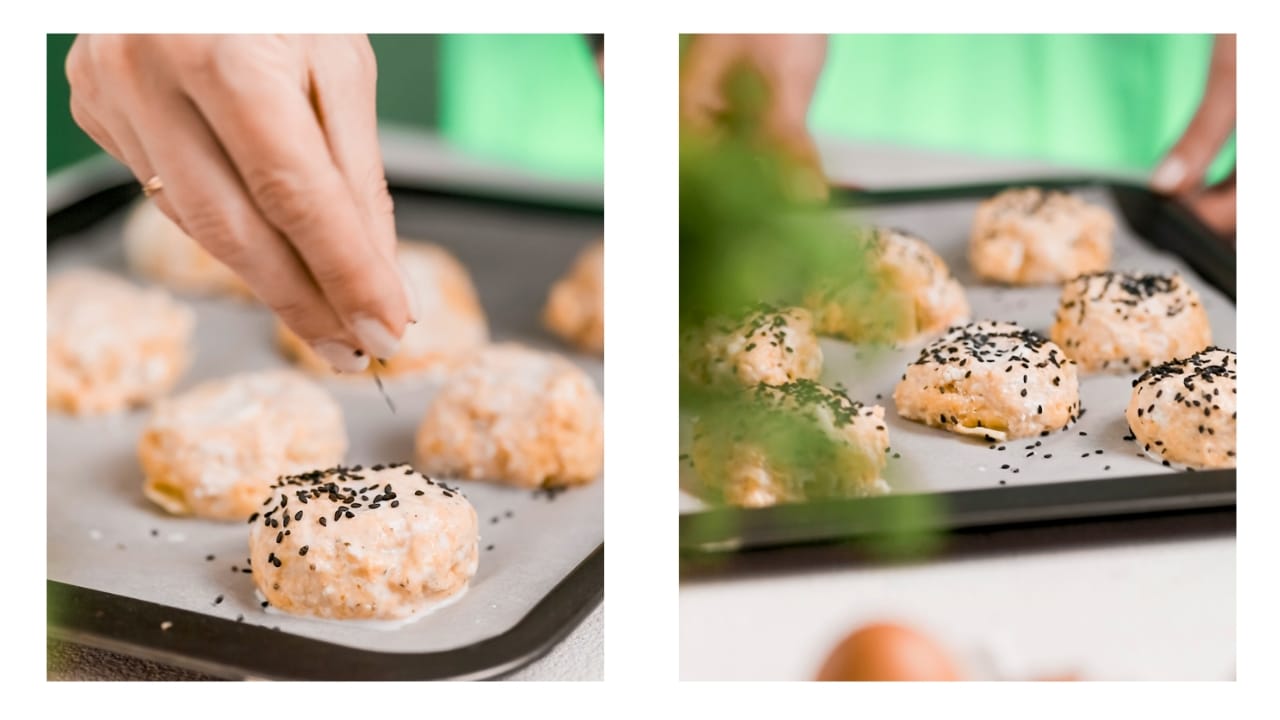
9) Bake in fan-assisted oven for 20 to 25 minutes making sure to remove the biscuits before they start to burn. During the last 5 minutes, you might want to turn the oven down to 150°C (300°F). (If you don’t have a fan-assisted oven, bake at 200°C (400°F).)
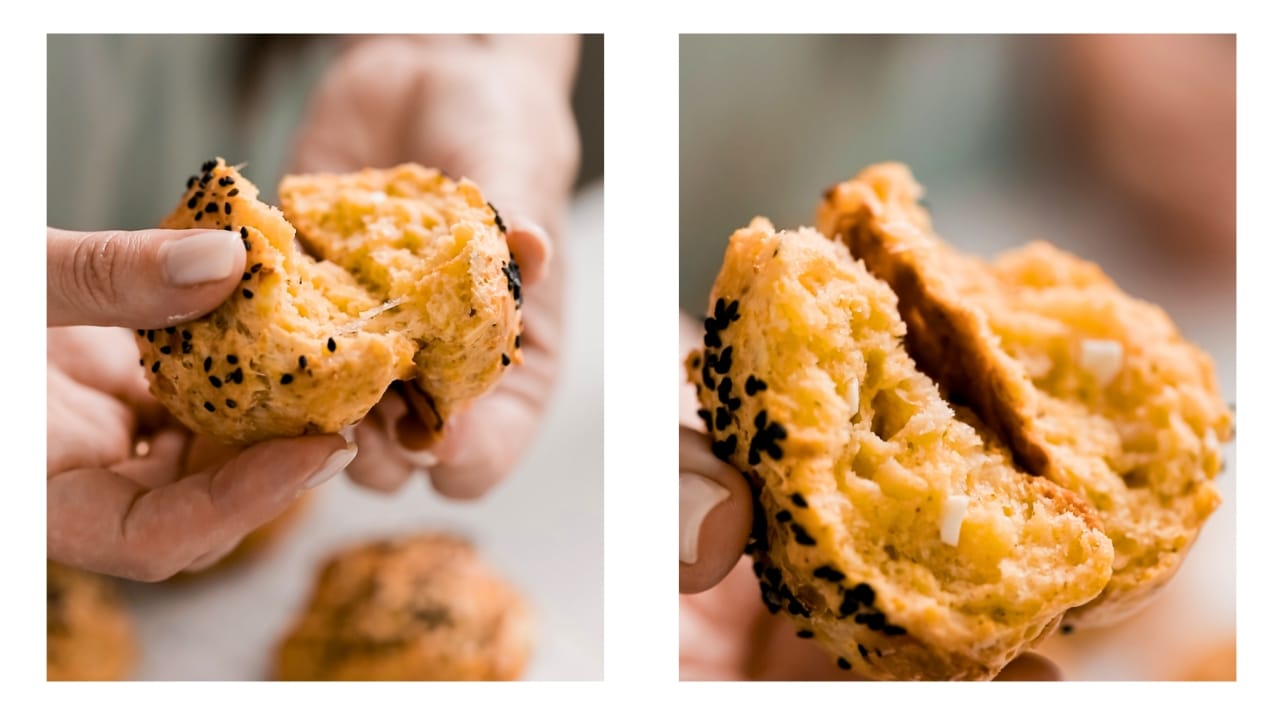
Take your family on a picnic with this savory and delicious treat that evolved from ancient days to become ours today.

Note: After baking and cooling, these biscuits freeze beautifully. Just place in an airtight container and take them out and reheat as needed.
Kali Orexi—Happy Eating!
Recipe Video for Tiropita Koulouriou
Please see our sister site, pjkabos.com (under "The Fat Olive) for the recipe's video and also read about how much nicer a Tiropita Koulouriou is than store-bought cheese snacks for you and your family.
Fresh Harvest 2024/25
High-Phenolic Extra Virgin Olive Oil
from PJ KABOS
PJ Kabos Family Reserve Organic—Phenolic Shot
(Gold Bottle)
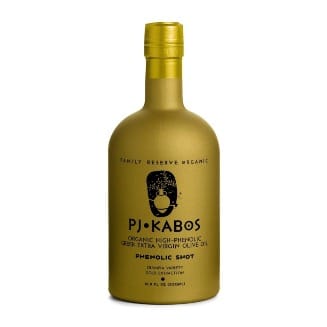
PJ Kabos Family Reserve Organic—"Phenolic Shot," is an award-winning extra virgin olive oil with possibly the highest phenolic content available in a true extra virgin olive oil today. Its intense bitterness and pungency clearly reflect the activity of these polyphenols. Meant to be taken as a shot or may be drizzled over salads, roasted vegetables, toast, fava, etc. to amplify both flavor and health benefits.
PJ Kabos Family Reserve Organic—Robust
(Black Bottle)
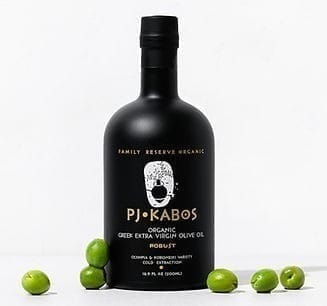
PJ KABOS Family Reserve Organic - Robust, is an extra virgin olive oil that is very high in polyphenols and adds depth, character and great health benefits to every meal.
PJ Kabos Family Reserve Organic—Medium Taste
(White Bottle)
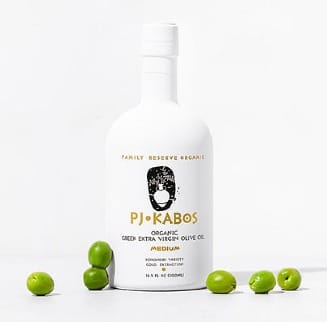
PJ KABOS Family Reserve Organic - Medium, is an extra virgin olive oil that is high in polyphenols and adds a lovely taste and great health benefits to every meal.
PJ Kabos Family Reserve—Medium Taste
(White Tin)
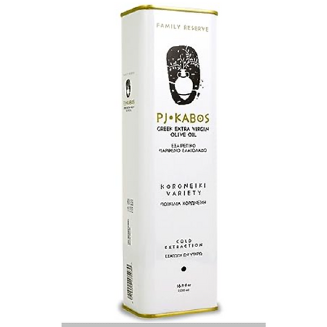
PJ KABOS Family Reserve - Medium, is an extra virgin olive oil in an easy-to-store tin that is high in polyphenols and adds a lovely taste and great health benefits to every meal.
Please enjoy having a look around our websites, pjkabos.com and oliveoil.com, as well as our Amazon Store for more about our many high-phenolic olive oils, recipes, history, etc. And follow along with us on Instagram for photos concerning olive oil production, our groves in Greece, articles about olive oil, family history and more.
PJ Kabos High-Phenolic Extra Virgin Olive Oil: Your Trusted Oil, Straight from Our Table to Yours.
[1] M.G. Gänzle, BREAD | Sourdough Bread, History in Encyclopedia of Food Microbiology (Second Edition), 2014, Retrieved July 19, 2024 from here.
[2] Ibid.


